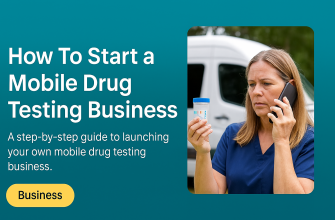I’m Alex Rivers, a business coach for women, and I’m thrilled you’re here—ready to turn your passion for teaching into a thriving business. Tutoring is an amazing way to use your expertise to help others and earn income on your own terms. You can serve K–12 students mastering reading or math, college students tackling tough courses, or even adult learners picking up new skills. Plus, you have choices in how you tutor: in-person, online, or a hybrid of both. Each model works well depending on your comfort and your students’ needs.
In this guide, I’ll be your coach and cheerleader as we go step-by-step from picking your niche to landing your first students. Think of this as part pep talk, part practical roadmap. We’ll cover everything from defining who you teach and how you teach them, to handling the legal side (business structure, licenses), setting your prices, writing a simple business plan, and marketing your services.
- Step 1: Identify Your Ideal Students and Niche
- Step 2: Choose Your Teaching Format – In-Person, Online, or Hybrid
- Step 3: Set Up Your Business Legally and Administratively
- Step 4: Set Your Rates and Plan Your Finances
- Step 5: Plan Your Business and Brand Your Service
- Step 6: Market Your Services and Find Students
- Step 7: Believe in Yourself and Keep Growing
- You Can Do This!
Step 1: Identify Your Ideal Students and Niche
Your first task is to choose who you’ll teach and what you’ll teach them. Tutoring opportunities are everywhere, so focus on where your passion and expertise shine. Here are some common student groups:
-
K–12 Students: You might help elementary or middle school kids with subjects like reading, writing, math, or science. You could also support high school students preparing for tests (SAT, ACT, AP exams) or needing help in subjects like algebra, chemistry, or history.
-
College Students: Consider the college-level courses you excelled at. Maybe it’s calculus, biology, English composition, or a foreign language. Many college students look for one-on-one help with challenging classes or writing papers.
-
Adult Learners: Adults learning new skills are a growing market. You could teach English as a Second Language, computer skills, professional certifications, or hobbies like art or music.
Ask yourself: Which group am I most excited to help? If you’re a mom, perhaps you relate to young learners; if you were a teacher, maybe older students or test prep suit you; if you’re multilingual, adult language learners might be your niche. You do need to know your subject really well—your confidence comes from expertise. But you don’t need a special tutoring certificate (unless you want extra credibility).
Identify your strength areas and who needs those skills. Jot down ideas: “I love math – maybe I can tutor middle-school algebra.” Or “I’m great at writing – perhaps college students need help with essays.” This clarity is your first step.
Step 2: Choose Your Teaching Format – In-Person, Online, or Hybrid
Tutoring is wonderfully flexible. Decide how you’ll meet with students:
-
In-Person Tutoring: This means face-to-face sessions. You could teach from your home (if you have a quiet space), travel to students’ homes, or rent a room at a library or community center. In-person can build strong personal connections. Just remember to check local rules: some cities require a home-business permit or zoning clearance if you teach from home.
-
Online Tutoring: Teach students through video calls (Zoom, Skype, or specialized platforms). Online tutoring breaks down geographic barriers—your student could be across town or across the country. It’s great if you want to work from home without traveling. You’ll need a reliable computer, webcam, and good internet. Many parents and students appreciate the convenience of online sessions.
-
Hybrid Tutoring: A mix of both. For example, you could meet local students in person for initial assessment or group classes, and conduct regular sessions online. Or offer in-person tutoring locally and online tutoring for anyone farther away. Hybrid models can give you the best of both worlds.
Think about what fits your life and your students’ needs. As a busy woman entrepreneur, online options may suit you if you need flexibility. Or if you enjoy personal interaction and can do it safely, in-person might feel more natural. Whatever you choose, be clear in your messaging so clients know what to expect.
Step 3: Set Up Your Business Legally and Administratively
Now let’s make it official—this is your business, so it needs a legal and financial foundation:
-
Choose a Business Structure: Most tutors start as a sole proprietorship (you and the business are the same) because it’s simple. But that means any debts or liabilities come out of your pocket. Consider forming an LLC (Limited Liability Company) if you want personal asset protection. An LLC costs a bit more to set up and has some paperwork, but it can shield your personal finances if something goes wrong. Talk to a local small business advisor or online service to decide what’s best for you.
-
Pick and Register Your Business Name: Think of a friendly, memorable name for your tutoring business (like “Bright Minds Tutoring” or “Spanish Success Center”). If you use a name other than your own, you’ll likely need to file a Doing Business As (DBA) form or register your LLC name with your state. This makes it official and allows you to open a separate bank account in that name.
-
Licenses and Permits: Check your city or county rules. Many tutors don’t need special educational licenses for private tutoring, but if you’re working from home or traveling to students, you might need a general business license or a home occupation permit. For example, some places require anyone working from home (even tutoring) to register the business or get a permit. It’s a quick call to your local city hall or a check on their website.
-
Insurance: It’s wise to think about insurance. General liability insurance can protect you if, say, a student accidentally gets hurt at your home. Some home or auto insurance policies allow a rider for home-based businesses. Professional liability insurance (errors and omissions) is another option if you advise or tutor in a way that could lead to disputes (though it’s more common for high-stakes academic or college-prep tutoring). For many new tutors, simple business liability insurance is enough.
-
Banking and Taxes: Open a separate business bank account as soon as possible. This keeps your business finances apart from personal, which makes taxes and accounting much easier. Get an EIN (Employer Identification Number) from the IRS – it’s free and identifies your business for tax purposes (even if you have no employees, an EIN is useful and safer than giving out your Social Security number). Keep careful records of all income and expenses. You can use a simple spreadsheet or free software like Wave or Excel.
By taking care of these basics up front, you’ll avoid headaches later and operate like the professional you are.
Step 4: Set Your Rates and Plan Your Finances
Next up: money. You need rates that cover your time and skills but also make sense for your market.
-
Estimate Your Costs: Start by listing what you’ll spend. This might include: educational materials or books, a reliable laptop or software (for online tutoring), marketing materials (like flyers or a website), travel costs (if you go to students), and ongoing costs like internet service or a tutoring platform subscription. Don’t forget your own time – that’s part of the cost of doing business.
-
Research Local Rates: Check what other tutors in your area and subject charge. Rates can range widely: in general, tutors might charge anywhere from $20 an hour (for entry-level or group tutoring) up to $50+ or more (for experienced or specialized tutors). Subjects like advanced math, SAT prep, or college courses often command higher rates. Keep in mind: urban areas and affluent communities typically have higher rates than rural areas.
-
Value Your Expertise: You bring unique value! If you have a college degree in the subject, teaching credentials, or years of experience, you can set higher rates than a brand-new tutor. Confidence is key: don’t sell yourself short. It’s easier to offer a discount later than to start too low and have to raise prices. Many tutors offer a discounted first session to attract students, then switch to the full rate once they’ve built trust and shown results.
-
Pricing Options: Decide if you’ll charge strictly by the hour, or offer packages. For example, selling a block of 10 sessions at a slight discount can guarantee client commitment and income upfront. Some tutors also offer group classes at a lower per-student rate, which can increase earnings. Make a simple price list (hourly rate, package deals, group rates if any).
-
Financial Goals: Think about your income goal. How many hours will you tutor each week? How many students? For instance, if you charge $40/hour and want to earn $2,000 a month, you need about 50 hours of tutoring (roughly 12–13 hours per week). Adjust these numbers based on your needs and schedule.
-
Keep Detailed Records: From day one, track every dollar in and out. Save receipts for any supplies or expenses. Consider using a free bookkeeping tool or app. Setting aside around 25–30% of your income for taxes (Federal, state, and self-employment taxes) is wise.
Handling money wisely will give you confidence and keep the business healthy.
Step 5: Plan Your Business and Brand Your Service
A full formal business plan isn’t mandatory for a one-person tutoring business, but having a simple roadmap is invaluable.
-
Write a Simple Plan: Even a one-page plan works. Write down your vision (“Empower local students to love learning math”), your services (what subjects and formats you offer), your target market (e.g., “2nd-5th graders needing extra math support”), and basic financial goals (like income targets or the number of students). List key strategies: “network with local schools,” “run Facebook ads for nearby parents,” etc. This exercise makes your goals clear and actionable. Remember, it’s for you – it can be just bullet points or a short document you review each month.
-
Create Your Brand: Think about your tutoring brand as the promise you make to clients. Pick a friendly, memorable name (for example, using words like “bright,” “success,” “step up,” or subject names). Choose a simple logo or consistent colors if you can (there are free logo-makers online). Write a tagline or mission statement, like “Boosting confidence one student at a time.” Your brand voice is important—speak in a friendly, patient, and encouraging tone (just like I’m doing now).
-
Unique Selling Point: What makes your tutoring special? Maybe you have a playful teaching style, a background in teaching special needs, or you use real-world examples that connect with students. Highlight this in your materials. Being clear on what sets you apart will attract the right students.
-
Business Identity: With your name chosen and business registered, start using it everywhere: on your website, social media, flyers, and email. This professionalism tells clients you mean business.
Having a plan and brand from the start will keep you focused and make your marketing much smoother.
Step 6: Market Your Services and Find Students
This is the fun part—getting the word out! Marketing may sound intimidating, but it’s just about letting the right people know you exist and what you offer. Here are some practical ideas:
-
Build an Online Presence: Even a simple website (which you can make yourself on platforms like Wix or WordPress) goes a long way. Include your photo, your story, subjects you teach, rates, and contact info. If a full website feels like too much, at least create professional social media pages (Facebook, Instagram, or LinkedIn) with the same info. Post a short bio and make sure people know how to reach you.
-
Leverage Word of Mouth: Tell everyone! Post on your personal Facebook or Nextdoor that you’re now offering tutoring. Give flyers to your own kids’ teachers, after-school programs, or community centers. Ask local libraries or coffee shops if you can pin a small advertisement on their bulletin boards (many will be happy to help community educators). Parents are always looking for good tutors, and personal referrals are gold.
-
Network with Schools and Groups: Reach out to local schools—some have bulletin boards or email newsletters for parents. Join community groups (like PTAs, homeschool co-ops, or moms’ groups) and casually mention your services when it fits. You can also join online groups for parents or students in your area and share helpful tips. Be genuine—don’t spam links; instead, offer value (like a free homework-help session or study tip) and let people know you’re a tutor.
-
Offer a Free Workshop or Trial: Hosting a free mini-class (for example, a fun math game day or a short science experiment session) can showcase your teaching style. You can do this at a community center, library, or online webinar. People who attend get a taste of how you teach and are likely to sign up. At the very least, a free or discounted first session for new students can bring in that first client.
-
List on Tutoring Platforms (Optional): Websites like Wyzant, Tutor.com, or local tutoring directories can help you find clients at first. They take a cut of your fee, but they also bring students to you. Use them as a starting point, but try to bring clients over to your own contact list long-term (so you keep all your earnings and build relationships).
-
Gather Testimonials: After you’ve taught a few sessions, ask happy students or parents for a short testimonial or review. These can be gold on your website or flyer: “Thanks to [Your Name], my daughter’s math grade improved two levels!” Authentic reviews build trust with new clients.
-
Stay Consistent: Marketing isn’t a one-time thing. Spend a little time each week on it: update social media, add a new flyer, email a local group. Even 1–2 hours a week can keep leads coming in.
Marketing doesn’t have to be complicated. Think of it like telling a friend about something great – just multiply that by the whole town!
Step 7: Believe in Yourself and Keep Growing
Starting a business is as much an emotional journey as it is practical. It’s normal to feel excited one moment and a bit overwhelmed the next. I want you to remember: you have what it takes to succeed. Every experienced tutor and business owner started exactly where you are now—full of questions and determination. Here’s how to keep the momentum:
-
Celebrate Small Wins: Book your first student? Celebrate! Finish a week where all your sessions went well? Celebrate! Each success builds confidence.
-
Stay Confident: You know more than your students in these subjects—that’s why they’re hiring you. If a bit of imposter syndrome creeps in (we all have it), remind yourself of your experience and passion. You’re not just teaching facts, you’re building confidence in your students.
-
Keep Learning: As you go, pick up new skills. Maybe learn a bit about marketing on Instagram, or take a short course on online teaching tools. Consider joining a tutoring association or an entrepreneurial group (there are many online communities for women in business). Surrounding yourself with supportive people can be a huge boost.
-
Be Flexible: Not everything will work on the first try. If a particular marketing idea doesn’t bring students, try another. If you find you love tutoring a different age group, pivot. Your business can grow and change with you.
-
Balance and Boundaries: As a woman entrepreneur, you might be juggling family or other responsibilities. Set clear business hours (even if flexible) and stick to them. It’s okay to say no to too many evening sessions if that’s when you need family time. Running a tutoring business does offer flexibility, so use that to your advantage.
-
Seek Support: Don’t do it all alone. Talk to other tutors, join a female entrepreneurs’ meetup, or get a mentor (hey, I’m here cheering for you!). When you face challenges, having someone to bounce ideas off can make a big difference.
Above all, trust yourself. You have a natural gift for teaching; now you’re learning how to share it on a bigger stage. Each student you help will build your reputation, and soon your schedule will fill up.
You Can Do This!
Launching your tutoring business is an empowering journey. By serving students of any age—young kids, teens, college students, or adults—you are making a positive impact on your community. With passion and persistence, your tutoring side hustle can grow into a truly fulfilling business.
Take it one step at a time. Write down your first niche idea, draft that simple business plan, and announce your new venture to your network. I promise: the path becomes clearer as you walk it. Remember, you’re not just a tutor; you’re a mentor and a role model. Your belief in yourself will inspire confidence in your students.
I believe in you, and I’m cheering you on every step of the way. Your tutoring business awaits—let’s make it happen!









